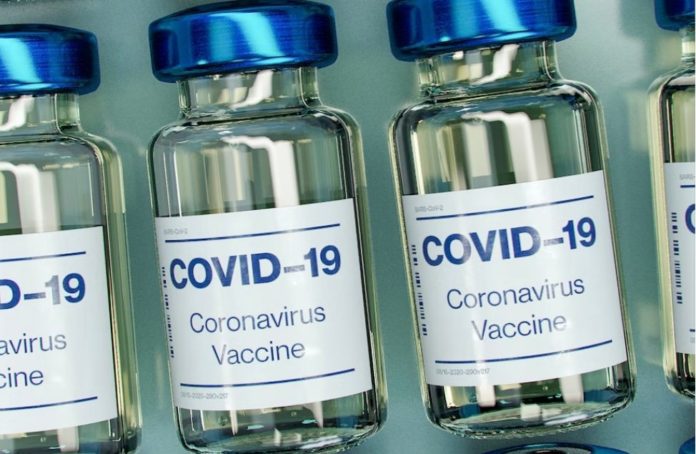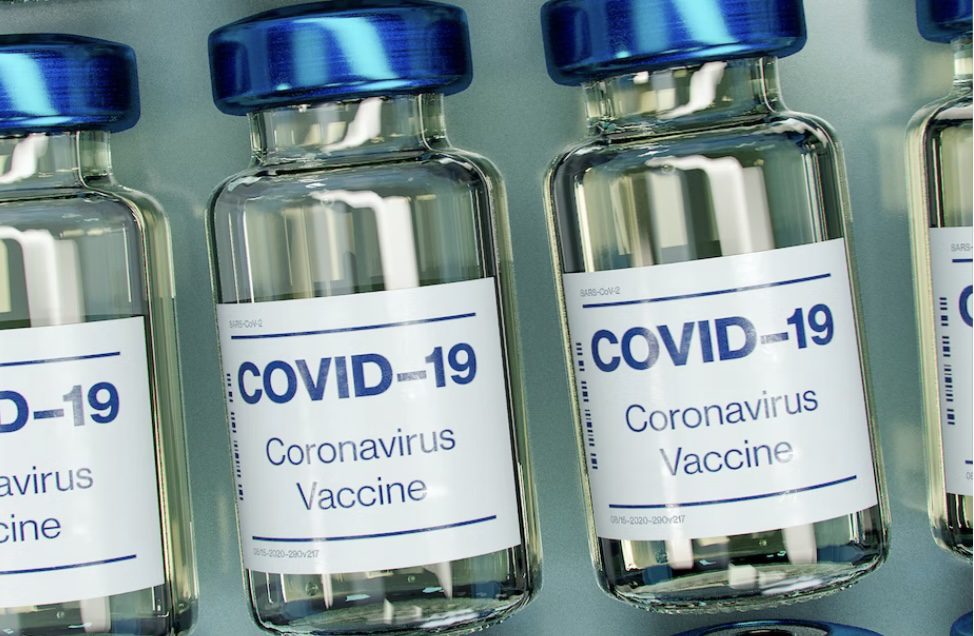Evidence of unexpected rapid progression of lymphomatous lesions was detected in a man recently diagnosed with angioimmunoblastic T-cell lymphoma (AITL) a rare, often but not always, aggressive (fast-growing) form of peripheral T-cell lymphoma, according to a case report analyzed by six health experts.
Angioimmunoblastic T-cell lymphoma (AITL) is a type of T-cell lymphoma – non-Hodgkin lymphoma that develops from white blood cells called T cells.
Michael Goldman, a Belgian pro-vaccine doctor and a professor at the Free University of Brussels, Belgium specializing in internal medicine and immunology, was diagnosed with lymphoma, a general term for cancers that start in the lymph system.
** The Gateway Pundit wrote about Goldman’s case previously.
Goldman and his colleagues published his case report in Frontiers of Medicine last year, titled “Rapid Progression of Angioimmunoblastic T Cell Lymphoma Following BNT162b2 mRNA Vaccine Booster Shot: A Case Report.”
From the case report:
“A 66-year-old man with no significant medical history except for hypertension, hypercholesterolemia and type 2 diabetes presented on September 1, 2021 with cervical lymphadenopathies that became recently apparent during a flu-like syndrome. The two doses of BNT162b2 mRNA vaccine had been administered, respectively, 5 and 6 months earlier in the left deltoid. Besides moderate asthenia, he did not report any constitutional symptom. Blood examination indicated a mild inflammatory syndrome, without anemia or white blood cell changes; Lymphocytes immunophenotyping was unremarkable. Protein electrophoresis and immunoglobulin levels were normal and Coombs test was negative.”
On September 22, 2021, Goldman was eager to receive the mRNA vaccine booster dose. As he was about to undergo chemotherapy that would leave him immunocompromised, he was concerned about not being protected enough from Covid-19.
Within a few days of being boosted, Goldman’s cancer symptoms — including night sweats, tiredness, and enlarged lymph nodes — worsened.
More from Newsbreak:
He then took another computed tomography (CT) scan. And the results were horrific.
“The pictures showed a brand-new barrage of cancer lesions — so many spots that it looked like someone had set off fireworks inside [Goldman’s] body,” Khamsi described. “More than that, the lesions were now prominent on both sides of the body, with new clusters blooming in [Goldman’s] right armpit in particular, and along the right side of his neck.”
Such cancer progression within three weeks is uncanny given what we know about the natural course of lymphoma, and Goldman needed steroids as soon as possible. Goldman began to suspect that the booster shot had somehow worsened his lymphoma, making his chance of survival for more than five years at only 30%.
Before getting boosted, the lymphoma was only limited to Goldman’s left armpit and neck. Coincidentally, Goldman received his first and second mRNA vaccine dose on the left arm. But Goldman received the booster on the right arm, and the lymphoma began appearing therein.
Newsbreak author Shin Jie Yong, an MSC Biology student reported what he learned from a professor who told him about seven patients with stage IV tumors that were well-controlled for almost five years but suddenly progressed after receiving the Covid-19 vaccination.
He [professor] theorized that vaccination, or any other immune stimulant for that matter, disturbed the delicate balance in the immune surveillance of cancer cells.
Second, lymphadenopathy (swollen lymph nodes) is a common adverse event associated with mRNA vaccines. A nationwide surveillance study from Israel found that the mRNA vaccine (Pfizer-BioNTech) is associated with a 2.4-times increased risk of lymphadenopathy compared to no vaccine, with an excess of 78 cases per 100,000 vaccines.
A meta-analysis of nine studies examining changes in 18F-FDG PET/CT scans after Covid-19 (mainly mRNA) vaccination revealed that 37% of vaccinees developed axillary lymphadenopathy on the same side as the shot due to vaccine-related immune responses. Since such vaccine-related axillary lymphadenopathy is similar to certain cancers, so they may get misdiagnosed as cancer. Patients at risk of cancer spread to axillary lymph nodes — e.g., breast cancer, melanoma, and lymphomas —are thus advised to get vaccinated in the arm opposite to the cancer side.
Third, certain mutations within the lymphomas might make them more sensitive to mRNA vaccines. A 2018 study showed that mice with RHOA G17V and TET2 mutations — which were also present in Goldman’s lymphoma — developed lymphoma upon immunization with sheep red blood cells. And it was the RNA present in the sheep’s red blood cells that was responsible for the immunization. And mRNA is a type of RNA.
Pro-vaccine advocate Michael Goldman, then 66 years old, was challenged whether or not to report the life-threatening adverse event he had after receiving a vaccine, per Shin. In the end, Goldman and his colleagues decided to publish their findings.
A comparison of Goldman’s 18F-FDG PET/CT scans taken before and after he had the mRNA vaccination booster shot is shown below. the black spots, with the exception of the brain, show lymphadenopathies, which are signs of cancer spreading.
The case report suggested that vaccination with the Pfizer mRNA vaccine might induce rapid progression of AITL.
“To the best of our knowledge, this is the first observation suggesting that administration of a SARS-CoV-2 vaccine might induce AITL progression. Several arguments support this possibility. First, the dramatic speed and magnitude of the progression manifested on two 18F-FDG PET-CT performed 22 days apart. Such a rapid evolution would be highly unexpected in the natural course in the disease. Since mRNA vaccination is known to induce enlargement and hypermetabolic activity of draining lymph nodes, it is reasonable to postulate that it was the trigger of the changes observed,” said the experts.
According to a recent study published on the Harvard website, there is a dramatic rise in cancer in people under 50.
“A study by researchers from Brigham and Women’s Hospital reveals that the incidence of early onset cancers — including breast, colon, esophagus, kidney, liver, and pancreas — has dramatically increased around the world.”
CNN reported:
A new review of cancer registry records from 44 countries found that the incidence of early-onset cancers is rising rapidly for colorectal and 13 other types of cancers, many of which affect the digestive system, and this increase is happening across many middle- and high-income nations.
The review’s authors say the upswing in younger adults in happening in part because of more sensitive testing for some cancer types, such as thyroid cancer. But testing doesn’t completely account for the trend, says co-authorShuji Ogino, a professor of pathology at the Harvard T.H. Chan School of Public Health.
Ogino says the spike is due to an unhealthy stew of risk factors that are probably working together, some which are known and others that need to be investigated.
Dr. James Olsson noticed that there seems to be a greater than usual number of reports of cancers.
Below is a screenshot of his tweet regarding cancer cases.





